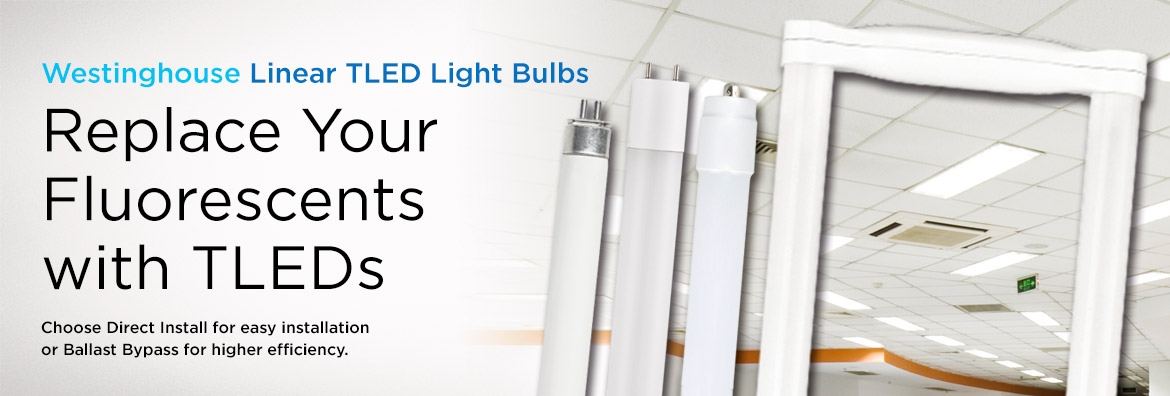Most TLEDs neglect CRI, falling around CRI 80 or 83 which is ho-hum. Or egads, CRI 70*shudder*. Let's not forget the much-maligned CRI, the Color Rendering Index -- which can make a space look tons better (improved colors, much better looking skins, more palatable-looking food while you're eating your snack in the concourse), by a simple change to a more expensive LED bulb with a higher CRI while simultaneously having a much more tamed spectrum curve. Many common cool white tubes often have a CRI 70 and compact fluorescents used to be that till they hit CRI 80-ish.
Today, my house mostly uses PWM-free (flickefree) CRI90-93 LED bulbs -- some that apparently now has full dim range (thru to 0% with zero flicker) and I've seen work on CRI95-98 though haven't seen certified bulbs (i.e. not false-chinese-labelled) for comparision. So LED can be so much better than 99% of LED bulbs.
Power efficiency is lower than common garden variety CRI80 LED (the bulbs you buy in Canadian Tire), but, hell, still more efficient than fluorescent. Cheap CRI90+ are found at IKEA for about three dollars or so (in packs), if you look carefully and catch them when they tend to cost ten dollars elsewhere (in the day of dollar LED light bulbs barely better than CFL). We're kinda getting offtopic, but I know you, steve, are quite critical of LED. However, well-chosen LED is still a massive improvement over incandescent, fluorescent, and average LED.
So to minimize stress on Union visitors, I would admonish Union Station revitalizaiton to:
(A) Certify at CRI of any future LED installs
(B) Verify PWM-free (capacitors/DC dimming/ideally AC-DC switching frequencies well in excess of audible spectrum, eg. 20KHz+)
(C) Proper diffusion
Especially for any LED they use for the Great Hall. They currently use HID there, so almost any properly engineered LED is an improvement as long as the sources don't become more point-source, or properly diffused. Unfiltered AC LED can be worse flicker than HID, but even minor capacitored LED blows away HID in flicker, not to say of delightfully proper 20KHz+ DC conversion. (Although I am not bothered, I can see PWM flicker up to approximately 2KHz -- via saccades / phantom array effect.
Proper solid-state fluorescent ballasts now use 20KHz not just because of beyond audio detection but also because
lighting studies show people can see fluorescent-tube PWM flicker up to 10 KHz via the wagonwheel stroboscopic effects that suddenly happen via eye saccades. Although wagonwheel effects has no upper limit (One can see 1 MHz wagonwheel effect, if wheel spins fast enough), the phosphor decay defines the fadepoint of stroboscopic detectability of wagonwheel/stroboscopic effects. Like flitting your eyes across fine wallpaper or tile patterns under very bright lights, and it doesn't naturally motionblur under 10 KHz PWM because the repeating pattern matched stationary positions of flashes. Or flitting eyes past point sources. Thus the recommendation for 20 KHz to go beyond easy stroboscopic detection thresholds all the way down to phosphor persistence -- as well as audio spectrum issues, especially for young/teens who hear higher pitch sounds like coil whine).
While I have fun (literally and derisvely, stroboscopic-effect-inducing pun-intended) "roll my eyes" at those unfiltered 120Hz-PWM-flickering LEDs from cheap chinese manufacturers, especially custom proprietary bulbs that can't be replaced when the manufacturer dies -- and the difficulty in perfect color temp/CRI matching across multiple vendors during bulb replacements -- I love properly engineered LED though, practically as good as incandescent (For my eyes anyway), though others may be much more sensitive to CRI imperfecgtions.
LED talk tends to drag on here, and has been moderated around here, so I'll steer the topic back. (Though lighting revitalization is an important subtopic of Union revitalization -- a crap LED can spoil renovated architectural aesthetic)
Any news on when they plan to finish Great Hall chandeliers?



